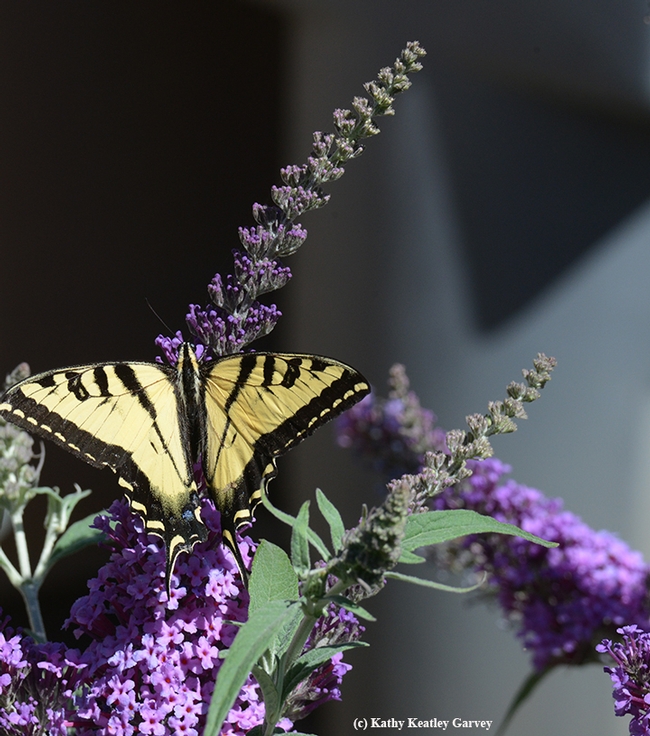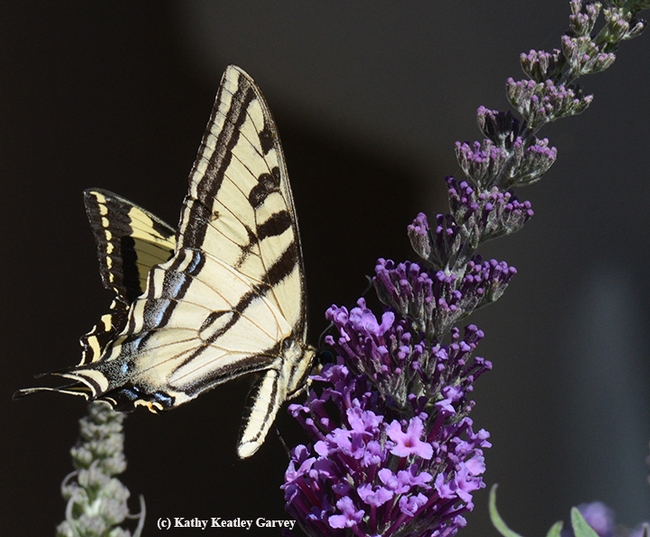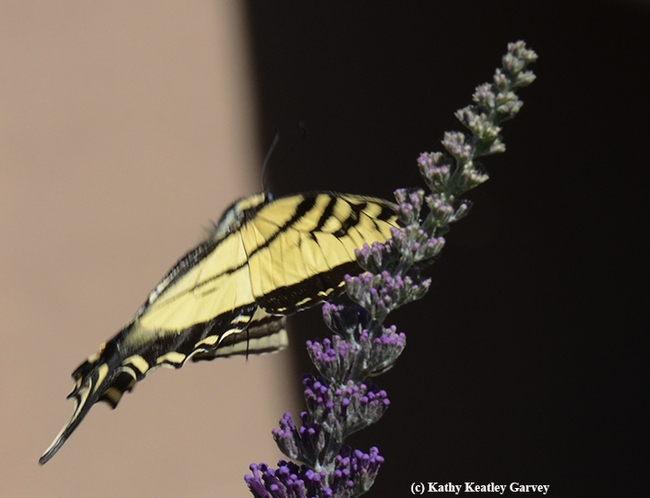It's the first day of summer and the beginning of National Pollinator Week.
What could be better?
This: Spotting a Western tiger swallowtail (Papilio rutulus) sail through the pollinator garden and touch down on a butterfly bush (Buddleia). When the striking yellow and black butterfly lands softly and begins to forage on the lavender butterfly bush, it's like a Picasso come to life.
"National Pollinator Week is a time to celebrate pollinators and spread the word about what you can do to protect them," say officials at the National Pollinator Partnership, which originated the idea of National Pollinator Week and now manages the observance. "During National Pollinator Week, we highlight and share the importance of pollinators including bees, birds, butterflies and bats."
Background: The U.S. Senate unanimously approved the designated week nine years ago. Now it's not only a national celebration but an international one. And well it should be, as we all remember to "protect our pollinators."
Check out the many logged-in activities on the Pollinator Partnership website. Among them: an open house on Friday, June 24 from 5:30 to 7 p.m. at the Häagen-Dazs Honey Bee Haven at the University of California, Davis. Part of the UC Davis Department of Entomology and Nematology, the half-acre garden was installed in the fall of 2009 and is located next to the Harry H. Laidlaw Jr. Honey Bee Research Facility on Bee Biology Road, west of the central campus.
The haven open house is free and open to the public. Activities include:
- Learn to observe and identify bees
- Catch and observe bees up close
- See honey bees at work
- Learn about low-water plans that help bees
- Buy native bee houses to support the haven
- Enjoy honey tasting and sales
The haven is open to the public from dawn to dusk. The 100-acre UC Davis Arboretum that circles much of the campus is open to the public 24 hours a day. There is no admission.
And that Western tiger swallowtail? You might see it now in the arboretum and haven. Butterfly guru Art Shapiro, UC Davis distinguished professor of evolution and ecology, writes about it on his website: "The Western Tiger Swallowtail is basically a species of riparian forest, where it glides majestically back and forth along the watercourse. It has expanded into older urban neighborhoods where several of its host genera are grown as shade trees, and behaves as if the street were a watercourse."
Among its favorite nectar plants: the aptly named butterfly bush.
Attached Images:

A Western tiger swallowtail foraging on a butterfly bush, Buddleia. (Photo by Kathy Keatley Garvey)

Sometimes a Western tiger swallowtail resembles the brightly colored sails of a sailboat. (Photo by Kathy Keatley Garvey)

Ready for take-off: the Western tiger swallowtail prepares to leave a butterfly bush. (Photo by Kathy Keatley Garvey)